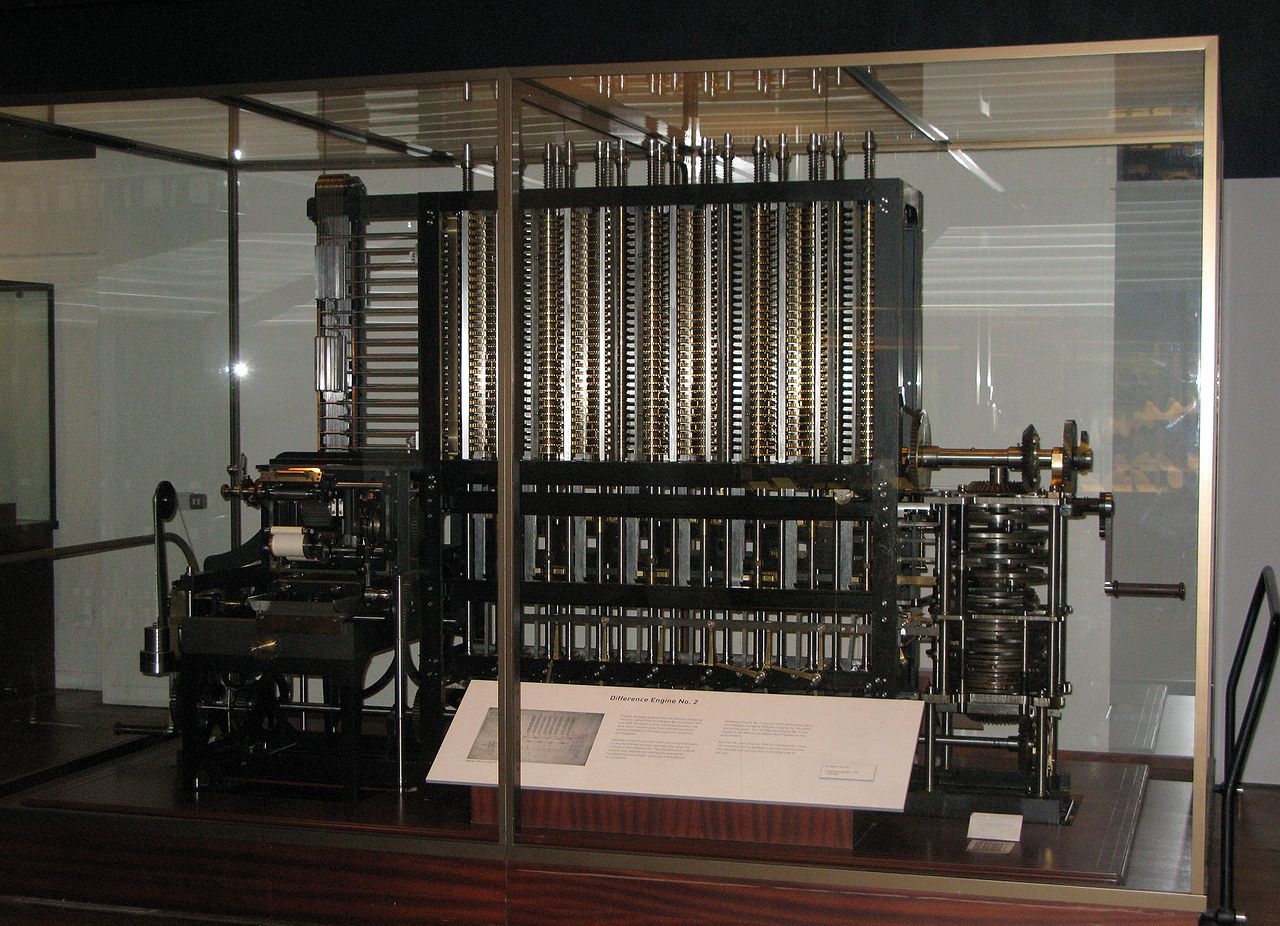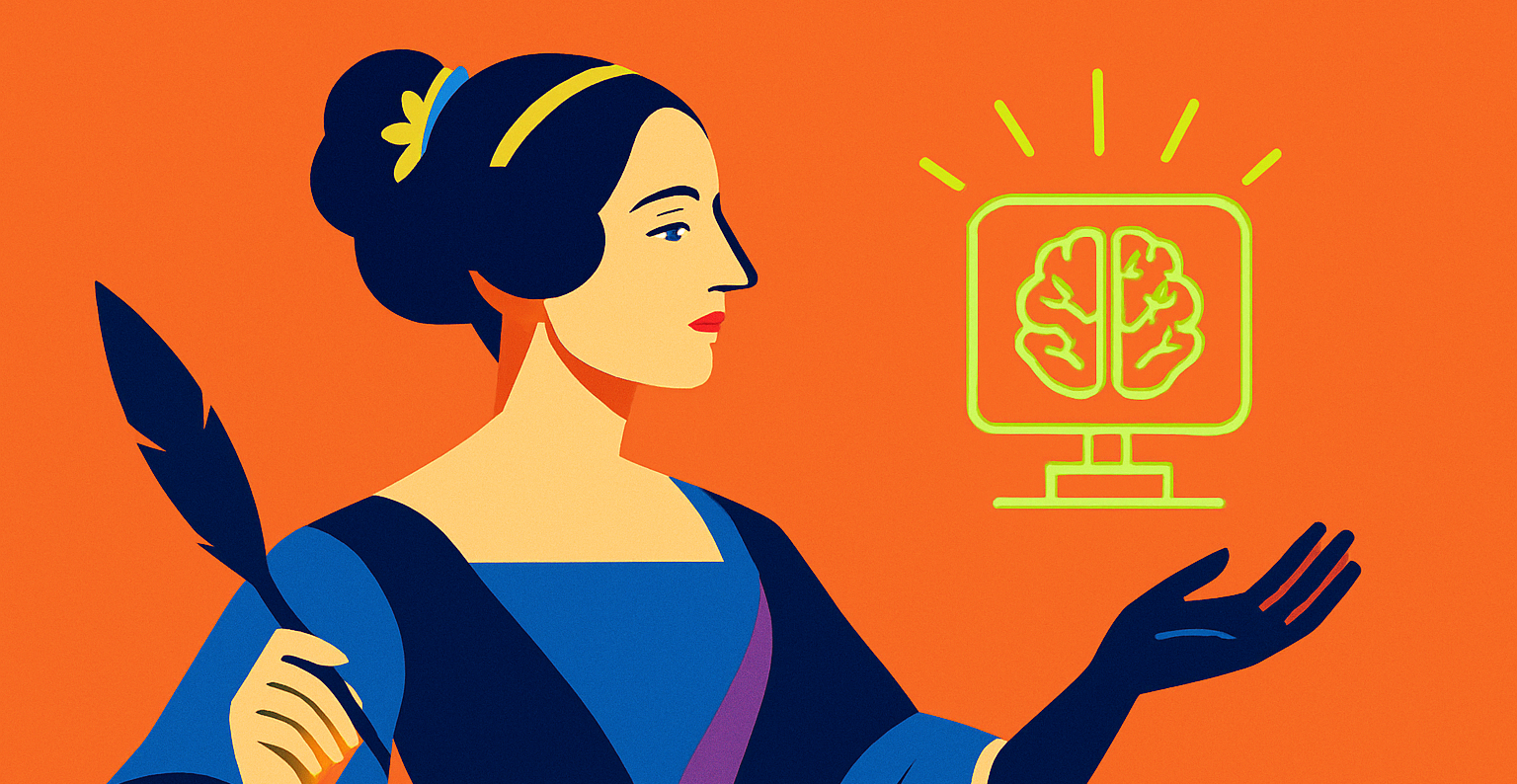Before artificial intelligence, before CRMs, before the idea of digital transformation even existed, there was Ada Lovelace — a mathematician, visionary, and the first person to see machines not as tools but as creative collaborators. Her imagination continues to inspire the way we build technology today, where data meets design and human curiosity powers innovation. This edition of The Engine Room honours the woman who imagined computation long before the world was ready for it.
The Original Architect of Imagination
Before algorithms powered business, creativity, and AI, there was Ada Lovelace — a woman who imagined machines not as mere calculators but as instruments of thought.
Born Augusta Ada King, Countess of Lovelace, in 1815, she saw possibilities in mathematics that few could comprehend. Long before the world spoke of artificial intelligence or data-driven design, Ada wrote the first algorithm. She didn’t just compute; she envisioned.
We often reflect on the people behind technology, the thinkers who merge logic with imagination. In our Engine Room series, we celebrate pioneers whose ideas continue to shape the way we work. Ada Lovelace stands at the heart of that lineage: a visionary who saw beauty in systems and humanity in code.
Lovelace's early education was extensive and comprehensive. Her mother, determined to prevent Ada from following in her father's literary footsteps, hired numerous tutors to teach her a wide range of subjects. From history and literature to geography, music, chemistry, and mathematics, Lovelace was immersed in a world of knowledge from a young age. This diverse education fostered her love for mathematics and logic.
At the age of 13, Lovelace contracted measles, which left her bedridden for nearly a year. Despite this setback, she continued her studies with fervour, displaying an exceptional aptitude for mathematics. Her passion for the subject only grew stronger over time, ultimately leading her to one of the most significant encounters of her life.
-.webp?width=770&height=747&name=Portrait%20of%20Ada%20Lovelace%20(1825%2c%20public%20domain)-.webp) Portrait of Ada Lovelace (1825, public domain).
Portrait of Ada Lovelace (1825, public domain).
The First to See Beyond Numbers
Ada’s upbringing was a meeting point between art and science.
Her father, the poet Lord Byron, embodied creativity and emotion, while her mother, Lady Anne Isabella Milbanke, grounded her daughter in mathematics and logic. Under the mentorship of Mary Somerville, Ada discovered that equations could describe not just mechanics but relationships, rhythm, and structure.
That discovery changed everything. When she encountered Charles Babbage’s mechanical engines, she recognised more than moving parts; she saw a framework for thought itself.
In 1833, at the age of 17, Lovelace attended a party where she met Charles Babbage, a mathematician, philosopher, and inventor. Babbage was impressed by Lovelace's mathematical prowess and invited her to see a prototype of his latest invention, the small difference engine. This machine, capable of performing complex calculations, fascinated Lovelace and sparked a lifelong collaboration between the two.
 The London Science Museum's difference engine, the first one built from Babbage's design.
The London Science Museum's difference engine, the first one built from Babbage's design.
Babbage's small difference engine was a precursor to his more ambitious project, the analytical engine. This machine, which Babbage conceptualised but never completed, was designed to perform any calculation or algorithm. Lovelace immediately recognised the potential of the analytical engine and began working closely with Babbage, translating and expanding upon his ideas.
The Moment the Future Shifted
Lovelace's most significant contribution to computing came in 1842 when she translated a French paper on Babbage's analytical engine. Not content with a mere translation, Lovelace added her own extensive notes and ideas, tripling the length of the original paper. These notes, published in 1843, contained what is now recognised as the first computer algorithm.
Lovelace's algorithm was designed to calculate Bernoulli numbers, demonstrating the analytical engine's ability to perform complex mathematical operations. Her notes also included a visionary idea: that the machine could process not only numbers but also symbols, laying the groundwork for the concept of universal computation. She foresaw that computers could be used for more than just calculations, predicting their potential to create music, art, and more.
 The World's First Computer Algorithm
The World's First Computer Algorithm
Ada’s Vision and the Birth of Artificial Imagination
Lovelace understood something we still grapple with today: machines can process data, but creativity begins with intent.
She wrote,
“The Analytical Engine has no pretensions whatever to originate anything. It can do whatever we know how to order it to perform.”
This idea, known as the “Lovelace Objection”, remains central to how we think about AI. Modern systems can generate, simulate, and predict, yet they still rely on human guidance, direction, and purpose. Machines extend creativity, but they do not originate it.
It’s a concept that echoes in today’s tools, from AI-driven marketing platforms to intelligent automation systems, all built to enhance human ideas rather than replace them.
That principle sits at the centre of how we use technology today. In our work with HubSpot, Microsoft, and our own furball data suite, we treat automation as augmentation, building systems that think with you, not for you.
HubSpot’s AI features, from Breeze Agents to workflow intelligence, connect insights with action. Microsoft’s infrastructure provides the secure, scalable foundations that make integration seamless. And furball, our in-house data governance and enrichment platform, brings structure, transparency, and intelligence to the information that drives growth.
Technology serving imagination — exactly as Ada envisioned.
 Ada's portrait featured in the book Faster Than Thought
Ada's portrait featured in the book Faster Than Thought
Lovelace's contributions to computing were not widely recognised during her lifetime. It wasn't until 1953, over a century after her death, that her work gained significant attention. British computer scientist Bertram Vivian Bowden reintroduced Lovelace's notes in his book, "Faster Than Thought: A Symposium on Digital Computing Machines," highlighting her pioneering ideas.
The Impact of Lovelace’s Work on Modern Technology
Lovelace’s brilliance went largely unrecognised in her lifetime. It wasn’t until 1953, more than a century after her death, that her notes were rediscovered and celebrated for what they were: the foundation of computer science.
Her foresight anticipated universal computation, the idea that machines could handle not just numbers but any form of structured information. That principle underpins everything from modern CRMs and AI-driven analytics to creative automation.

HubSpot Data Agent
Every day, when we design intelligent systems that unify marketing, sales, and service data in HubSpot, or architect data pipelines through Azure and furball, we are applying the same belief Ada held: that data, when structured and interpreted creatively, becomes a language of possibility.
A Legacy That Continues to Code the Future
More than a century later, Ada’s influence runs through every connected platform and every intelligent workflow.The principle she articulated, logic fused with imagination, defines the modern engine room of business technology.
When we build CRM ecosystems, automate lead journeys, or create AI-powered customer experiences, we are continuing her vision: turning complexity into clarity, and data into creative potential.
Her legacy reminds us that the goal of technology is not efficiency alone, but imagination applied with precision. It is about amplifying human potential, not reducing it to code.
Ada Lovelace Day, celebrated each October, honours her and all women shaping the future of science and technology. Her story remains more than historical context; it’s a challenge to keep exploring, questioning, and building with curiosity.
Source: International Society of Automation - ISA
Lovelace proved that the most transformative ideas are born where logic meets imagination. That’s where every new system begins, whether in a 19th-century study or a 21st-century data hub.
Ada wrote the first algorithm.
The rest of us are still writing its consequences.
The Engine Room series
Celebrating the thinkers, builders, and dreamers who keep the modern world in motion.
What Ada imagined, we continue to create — one line of code, one system, one bold idea at a time.

Share your Thoughts or Ask Us Anything!


.png)